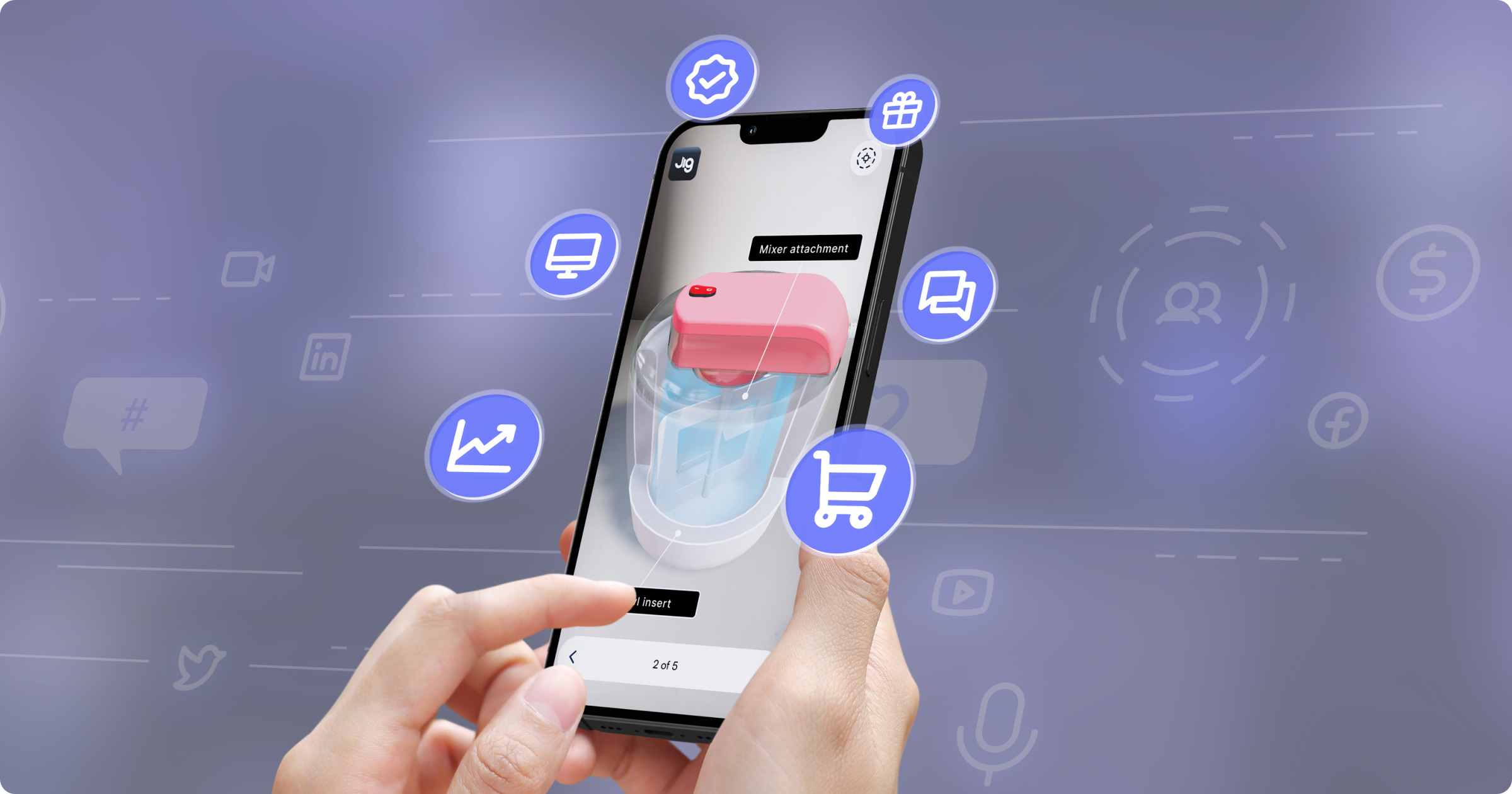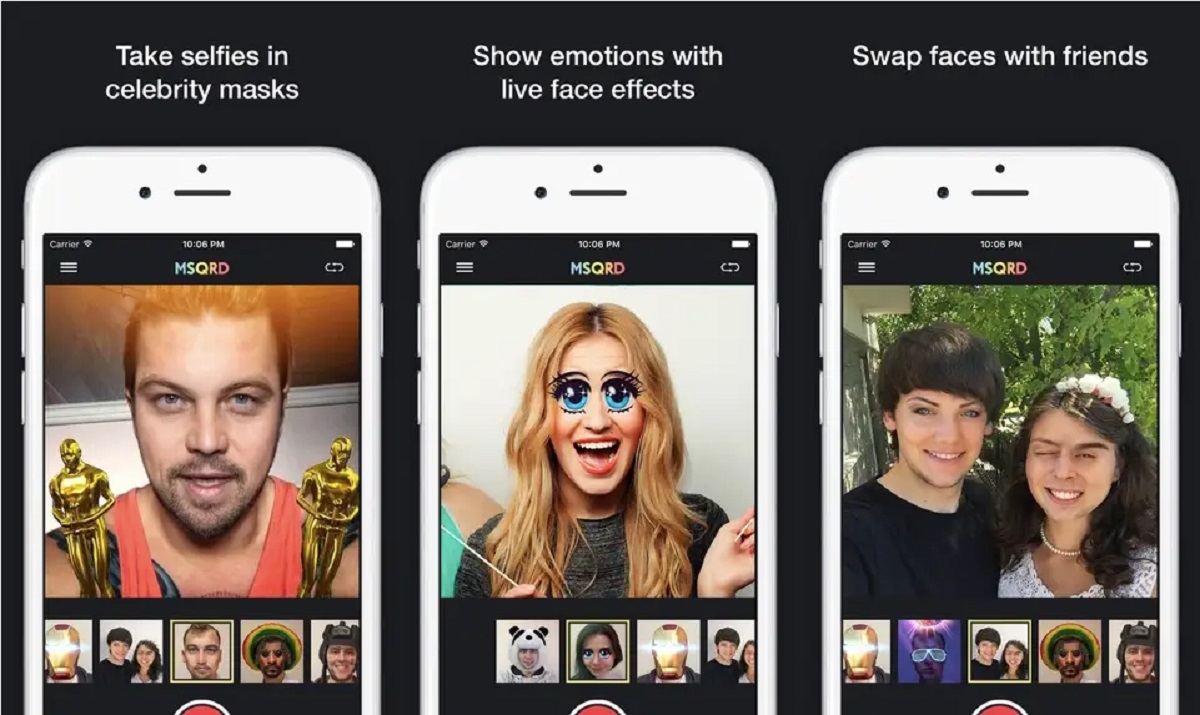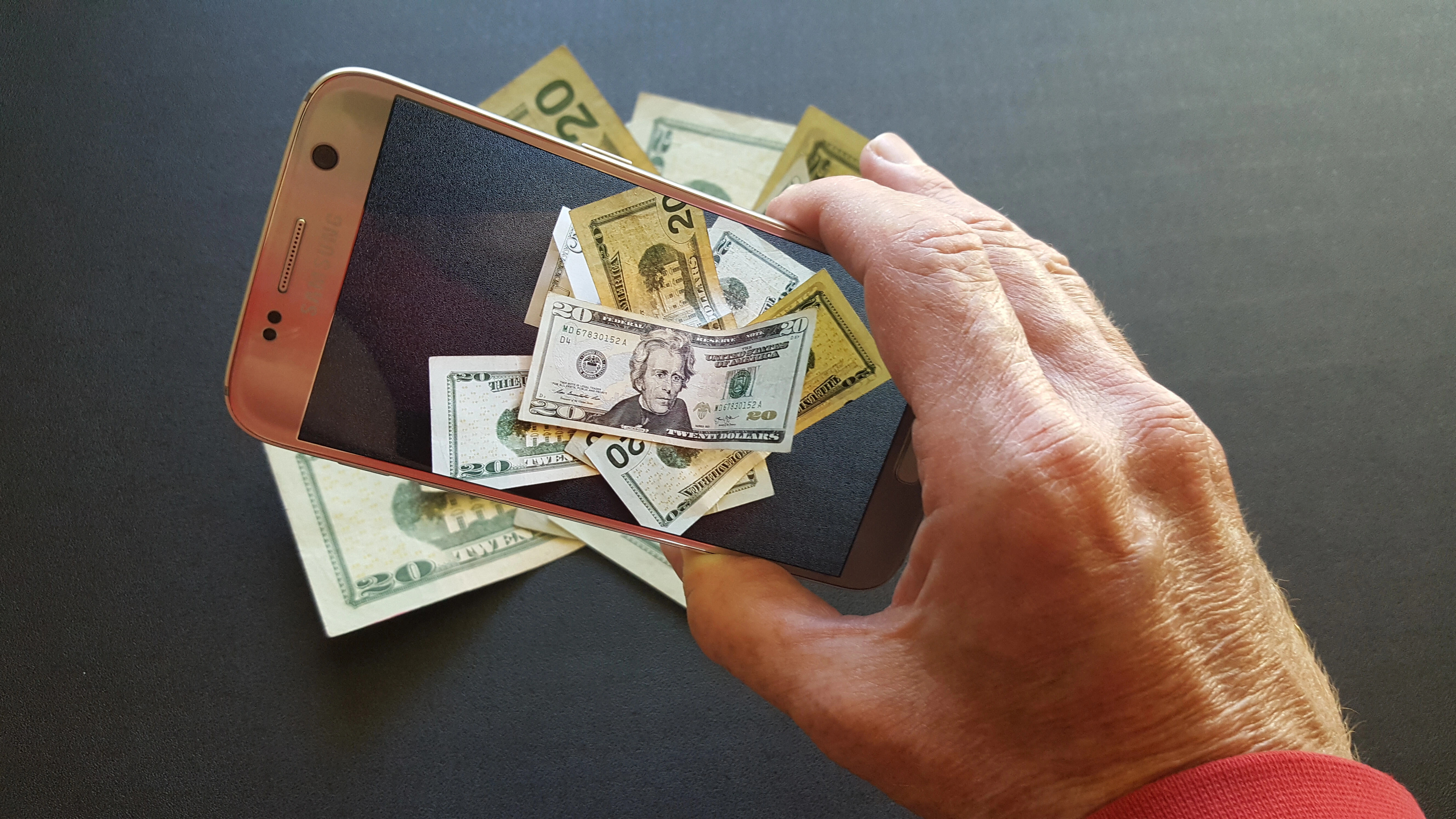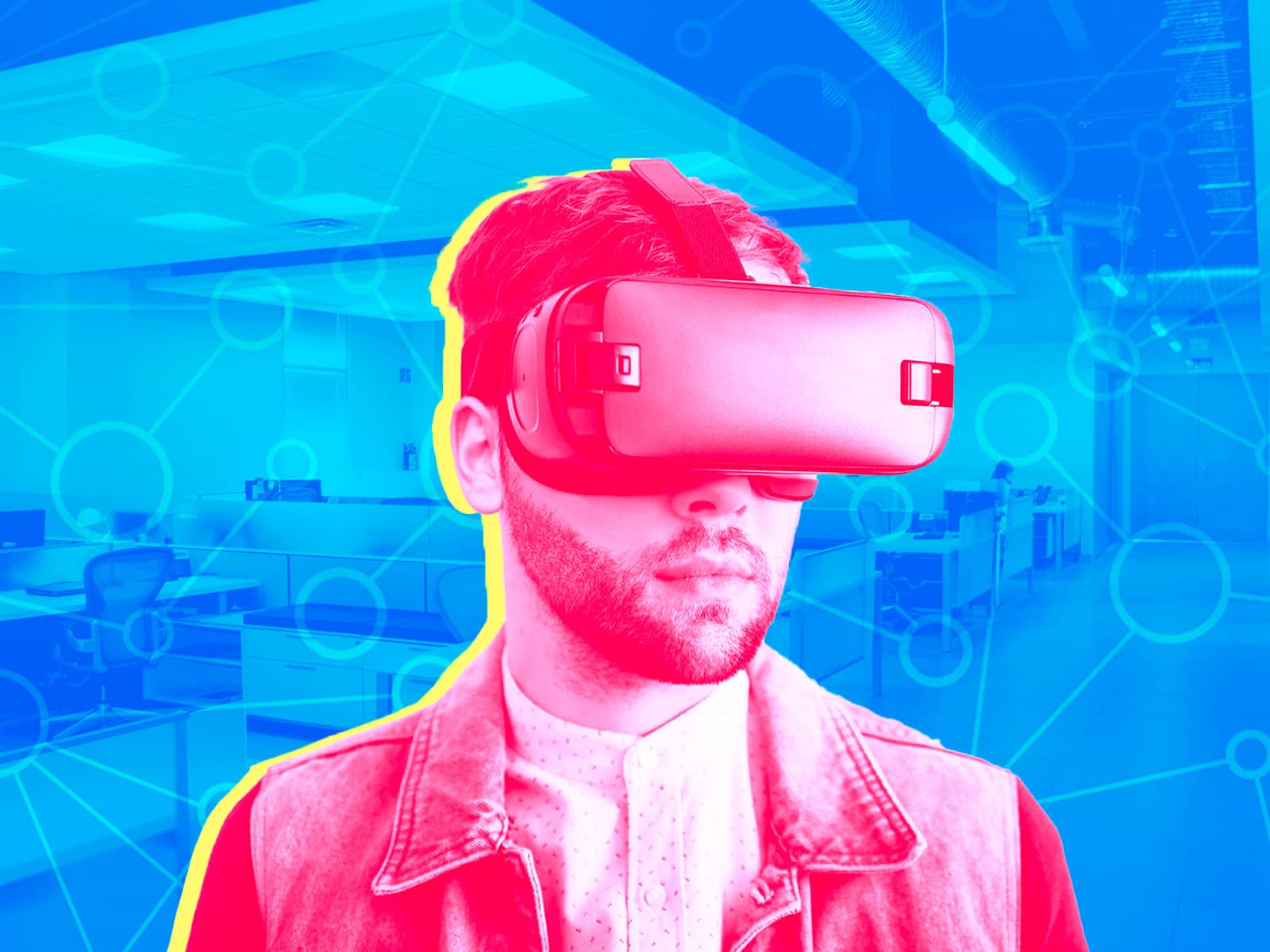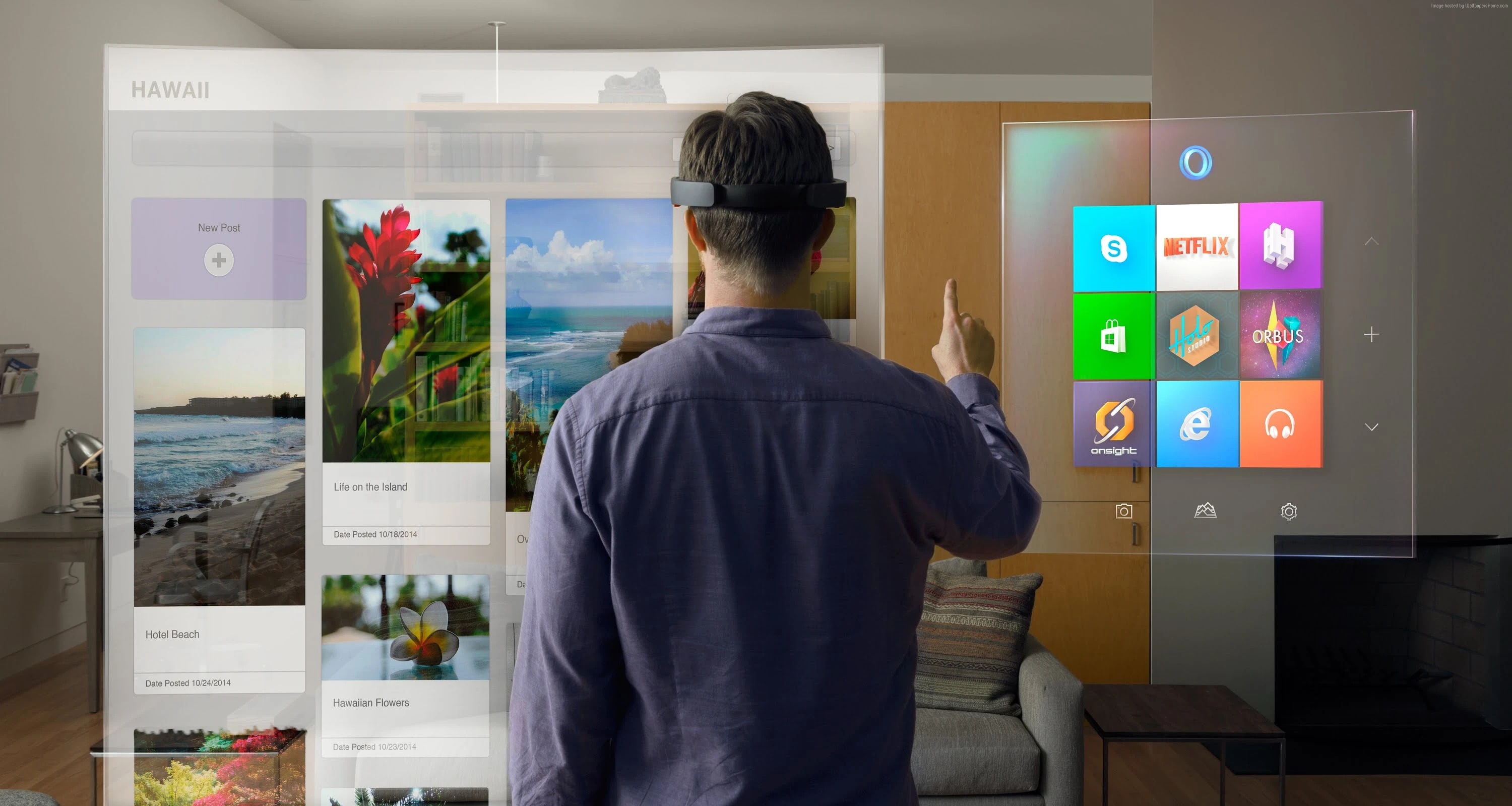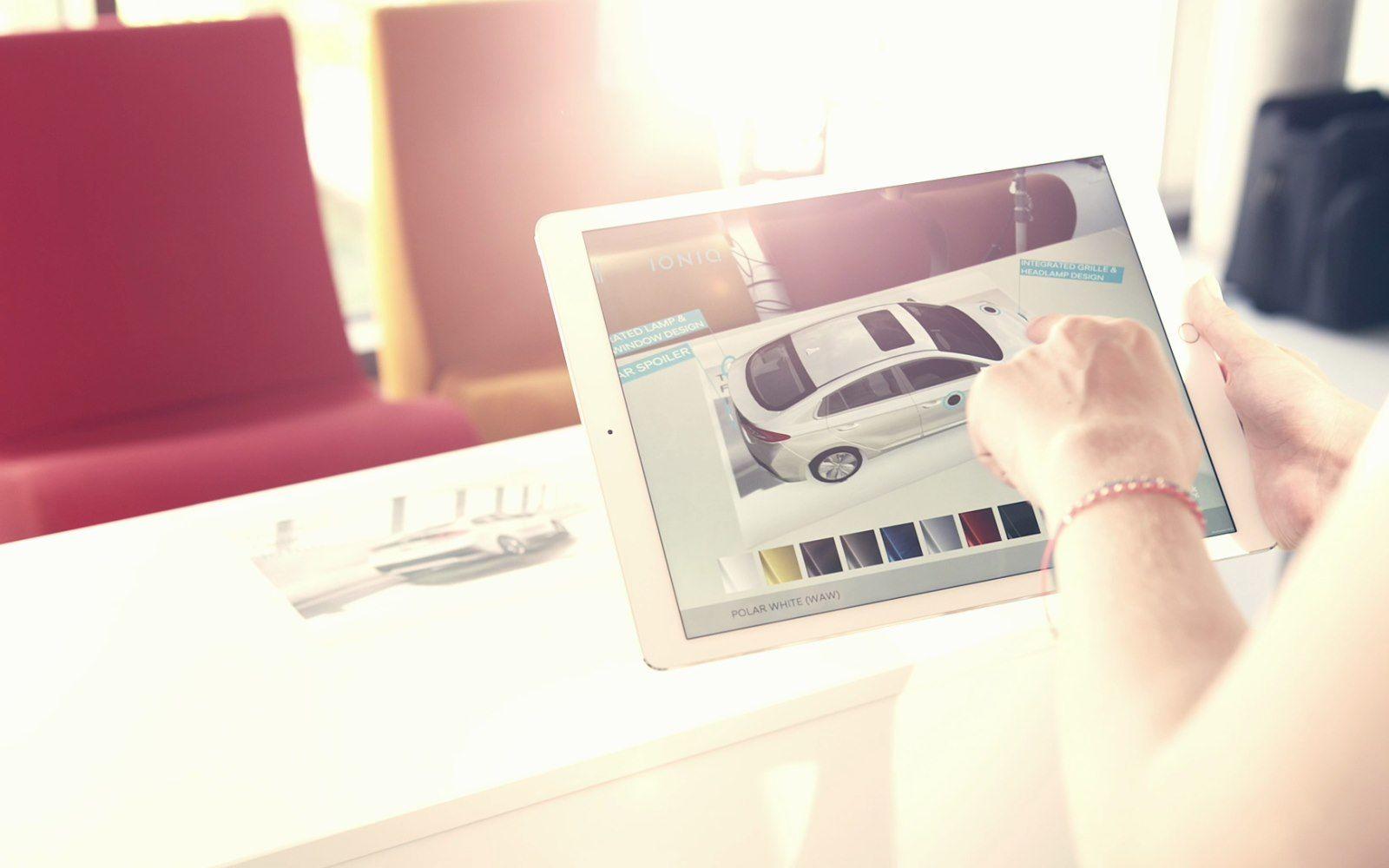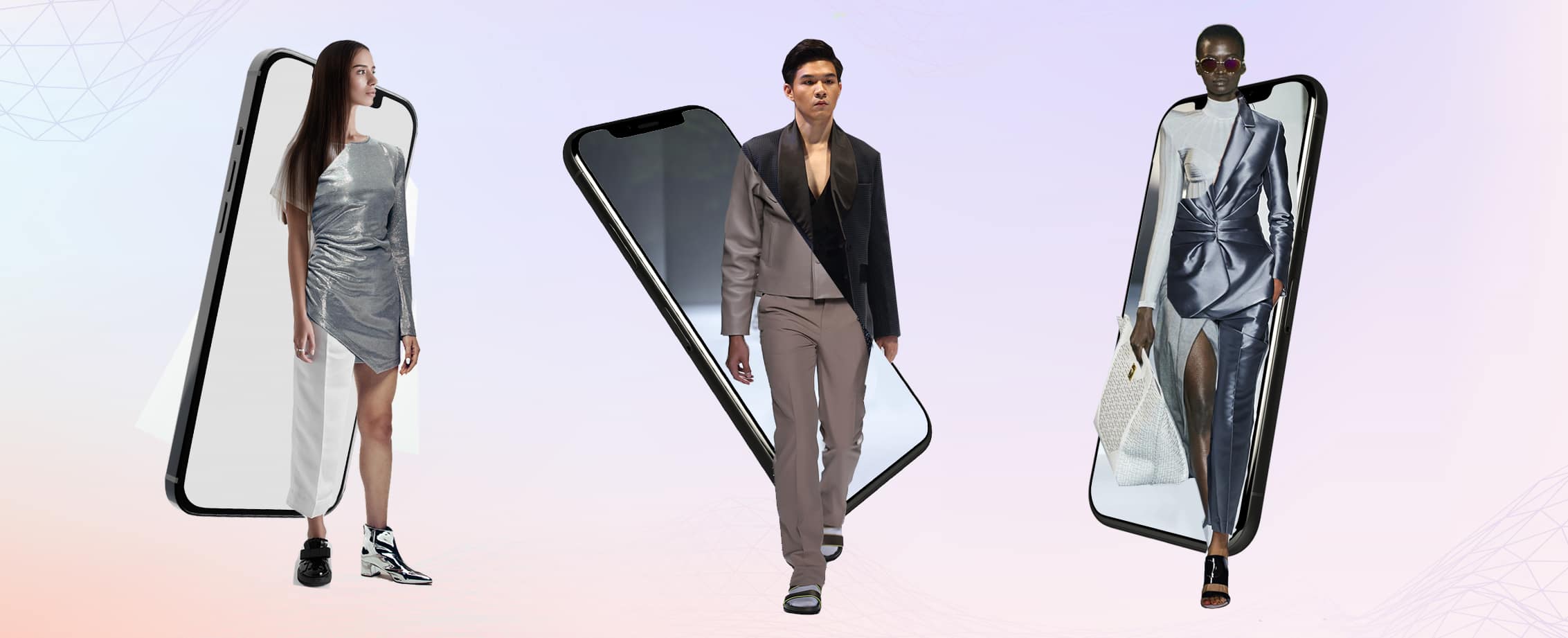Introduction
Welcome to the fascinating world of augmented reality in marketing. In today’s technologically advanced era, businesses are constantly seeking innovative ways to engage with their target audience and create memorable experiences. Augmented reality (AR) is a cutting-edge technology that has become increasingly popular in the marketing industry. It allows brands to integrate virtual elements into the real world, providing an interactive and immersive experience for consumers.
AR has transformed how businesses connect with their customers, revolutionizing traditional marketing strategies. By overlaying digital content onto the physical environment, AR creates a unique blend of real and virtual worlds. This technology has the power to captivate and engage consumers in ways that were previously unimaginable.
With the rapid advancements in mobile devices and the widespread availability of AR-enabled apps, consumers can now easily access augmented reality experiences right from their smartphones or tablets. This accessibility has opened up a whole new realm of possibilities for marketers to leverage AR and create impactful campaigns.
Over the years, augmented reality has been used in various industries, including gaming, education, healthcare, and entertainment. However, when it comes to marketing, AR provides a dynamic tool for brands to showcase products, tell compelling stories, and increase customer engagement. Whether it’s through interactive displays, virtual try-ons, or immersive brand experiences, AR has the potential to leave a lasting impression on consumers.
In this article, we will delve deeper into the world of augmented reality in marketing. We will explore how AR works, discuss its benefits, and examine some successful examples of AR campaigns. Additionally, we will provide insights on how businesses can implement AR in their marketing strategies and tips for a successful AR marketing campaign. We will also address the challenges and limitations of AR and discuss its future in the marketing landscape.
So, whether you are a business owner, marketing professional, or simply curious about the intersection of technology and marketing, join us on this exciting journey through the realm of augmented reality in marketing.
Definition of Augmented Reality (AR)
Augmented reality (AR) is an advanced technology that superimposes digital information onto the physical environment, creating an enhanced perception of reality. It integrates virtual elements, such as graphics, sounds, or haptic feedback, into real-world settings. Unlike virtual reality (VR), which immerses users in a completely virtual environment, augmented reality overlays digital content onto the real world, blending the virtual and physical realms seamlessly.
AR is designed to enhance the user’s perception and interaction with their surroundings. It augments the existing environment by adding digital elements that appear as if they are part of the real world. These digital elements can be viewed through various devices, such as smartphones, tablets, smart glasses, or headsets. With the widespread availability of AR-enabled apps, users can easily access augmented reality experiences on their mobile devices.
The primary goal of AR is to provide users with an interactive and immersive experience. By seamlessly integrating virtual content into the real world, AR offers endless possibilities for enhancing communication, entertainment, education, and marketing. Users can interact with virtual objects, explore virtual environments, and access additional information or services in real-time.
There are different types of augmented reality experiences, ranging from marker-based AR to location-based AR and projection-based AR. Marker-based AR relies on visual recognition technology, where markers or codes are used to trigger digital content. Location-based AR utilizes GPS or other location-tracking technologies to overlay virtual information based on the user’s real-time location. Projection-based AR projects digital content onto physical surfaces, creating interactive and immersive experiences.
The applications of augmented reality are vast and diverse. In marketing, AR allows businesses to showcase products in a more interactive and engaging manner. Users can visualize how furniture might look in their homes, try on virtual clothing, or preview cosmetic enhancements with the help of AR. AR is also used in navigation apps to provide real-time directions, in education to create interactive learning experiences, and in healthcare to assist in surgical planning and training.
Overall, augmented reality is a powerful technology that brings together the virtual and physical worlds, providing a unique and immersive experience for users. Its ability to enhance perception, interaction, and engagement opens up a world of possibilities for various industries, especially in the field of marketing where it has the potential to revolutionize customer experiences and drive brand innovation.
How Does Augmented Reality Work?
Augmented reality (AR) technology works by combining real-world sensory input with virtual elements to create an immersive and interactive experience. The process involves three essential components: tracking, mapping, and rendering.
The first step in the AR process is tracking. This involves accurately determining the position and orientation of the user or the device in real-time. AR systems use various tracking methods, such as GPS, inertial sensors, or computer vision algorithms, to continuously track the user’s movement and align the virtual elements with the real-world environment.
The second step is mapping. In order to overlay virtual elements onto the real world, AR systems need to understand the physical environment and create a digital representation of it. This process involves mapping the real-world objects, surfaces, and features using depth sensors or computer vision techniques. By understanding the physical space, AR can accurately place virtual objects within the real environment.
Finally, the rendered virtual elements are overlaid onto the real-world view, creating an augmented perception. The rendering process involves generating and displaying the virtual content in a way that seamlessly blends with the real environment. This can be done through heads-up displays (HUDs), smartphones, tablets, smart glasses, or other AR-enabled devices.
AR experiences are typically delivered through mobile apps or dedicated hardware devices. Mobile AR apps leverage the built-in sensors, cameras, and graphics processing power of smartphones or tablets to create immersive augmented reality experiences. These apps use the device’s camera to capture the real-world view and overlay virtual objects or information onto the live video feed displayed on the device’s screen.
AR hardware devices, such as smart glasses or headsets, offer an even more immersive experience by directly projecting virtual content onto the user’s field of view. These devices often incorporate advanced sensors, cameras, and optical systems to provide a seamless AR experience.
With the advancements in computer vision, machine learning, and sensor technologies, AR technology has become more sophisticated and accessible. It allows for real-time tracking and recognition of objects, surfaces, and gestures, enabling interactive and responsive AR experiences.
Overall, augmented reality works by combining real-world sensory inputs with virtual elements using tracking, mapping, and rendering techniques. By seamlessly blending the real and virtual worlds, AR creates immersive experiences that have the potential to transform various industries, including marketing, education, gaming, and healthcare.
The Benefits of Augmented Reality in Marketing
Augmented reality (AR) has revolutionized the marketing industry by providing a unique and engaging way for brands to connect with their customers. The benefits of incorporating AR into marketing strategies are numerous and can have a profound impact on brand awareness, customer engagement, and sales. Here are some key advantages of utilizing augmented reality in marketing:
- Enhanced Customer Experience: AR allows brands to create immersive and interactive experiences for their customers. By overlaying digital content onto the real world, AR offers a novel and engaging way for consumers to interact with products or services. Whether it’s virtually trying on clothing, visualizing furniture in their homes, or exploring virtual showrooms, AR enhances the customer experience and makes it more memorable.
- Increased Brand Awareness: Implementing AR in marketing campaigns can generate buzz and create a “wow” factor for brands. The uniqueness and novelty of AR experiences often attract media attention and word-of-mouth promotion, leading to increased brand awareness. AR can help brands stand out from the competition and leave a lasting impression on consumers.
- Improved Product Visualization: One of the biggest challenges in online shopping is the inability to visualize products before making a purchase. AR solves this problem by allowing customers to virtually try on products, see how they would look in their environment, or interact with 3D models. This improves the decision-making process and reduces the likelihood of returns, ultimately boosting sales.
- Increased Customer Engagement: AR provides an interactive and gamified experience for customers, increasing their engagement with the brand. By incorporating AR elements into marketing campaigns, such as scavenger hunts, interactive displays, or virtual rewards, brands can capture the attention and interest of their target audience. This not only drives engagement but also encourages social sharing and user-generated content, further amplifying the brand’s reach.
- Personalized Marketing: AR can be utilized to deliver personalized marketing messages and experiences. By leveraging AR technology, brands can tailor content, offers, or recommendations based on the user’s preferences, location, or past interactions. This personalized approach creates a more relevant and meaningful engagement with customers, increasing the likelihood of conversions and customer loyalty.
- Data Collection and Insights: AR experiences can provide valuable data and insights into customer behavior and preferences. By analyzing user interactions, dwell times, or click-through rates, brands can gain valuable insights to optimize marketing strategies and improve future campaigns. This data-driven approach helps brands make data-informed decisions and refine their marketing efforts.
These are just a few of the many benefits that augmented reality brings to the marketing landscape. From enhancing customer experiences and increasing brand awareness to driving engagement and personalization, AR has the power to transform how brands connect with their target audience. By embracing AR technology, marketers can stay ahead of the curve and create innovative and impactful campaigns that resonate with consumers.
Examples of Augmented Reality in Marketing
Augmented reality (AR) has gained traction in the marketing industry, with many brands leveraging its potential to create memorable and interactive experiences for their customers. From retail to food and beverage, AR has been used in various industries to engage with consumers in innovative ways. Here are a few examples of successful augmented reality marketing campaigns:
- IKEA Place: The IKEA Place app uses AR to help customers visualize how furniture would look and fit in their homes. By simply pointing their smartphone camera at a space, users can browse through IKEA’s furniture catalog and place digital representations of their desired furniture in real-time. This empowers customers to make more informed purchasing decisions and eliminates the guesswork of furniture shopping.
- Snapchat Filters: Snapchat is known for its popular AR filters that allow users to add fun and interactive effects to their photos and videos. Numerous brands have utilized Snapchat filters for marketing purposes. For example, Gatorade created an AR filter that virtually poured Gatorade over users’ heads, simulating a celebratory victory moment. This campaign successfully engaged Snapchat users and strengthened brand awareness.
- Pepsi MAX Unbelievable Bus Shelter: Pepsi MAX created an AR bus shelter campaign that surprised and delighted unsuspecting people waiting for the bus. By transforming a bus shelter window into an AR screen, passersby witnessed incredible scenes such as an alien invasion, a tiger escaping from a billboard, and a robot crashing through the ground. This campaign showcased the power of AR to create memorable experiences and generate buzz around the brand.
- L’Oreal Makeup Genius: L’Oreal’s Makeup Genius app uses AR to virtually try on makeup products. Users can scan their face using their smartphone camera and experiment with different makeup looks in real-time. This helps customers visualize how different products and shades would look on their own faces, allowing for a more personalized and convenient makeup shopping experience.
- McDonald’s Happy Meal AR Adventures: McDonald’s introduced AR experiences with their Happy Meals, bringing characters to life through the MagicAR app. By scanning designated markers on Happy Meal boxes, children can interact with animated characters and engage in interactive adventures. This interactive AR campaign adds an extra layer of excitement to the Happy Meal experience and creates a memorable connection with the brand.
- Volkswagen AR Showroom: Volkswagen utilized AR to create a virtual showroom experience for customers. The Volkswagen AR showroom app allowed users to explore and interact with virtual Volkswagen cars, customize them with different colors and features, and even take a virtual test drive. This AR campaign provided customers with a convenient and immersive way to explore Volkswagen’s car lineup.
These examples highlight the versatility and creativity of augmented reality in marketing. By leveraging AR technology, these brands were able to engage customers, provide personalized experiences, and generate buzz around their products or services. As AR continues to evolve, we can expect even more innovative and impactful applications in marketing campaigns across various industries.
How to Implement Augmented Reality in Your Marketing Strategy
Implementing augmented reality (AR) in your marketing strategy can be a game-changer for your brand, creating memorable experiences and capturing the attention of your target audience. If you’re considering incorporating AR into your marketing efforts, here are some steps to help you get started:
- Define Your Objectives: Begin by clearly defining your marketing objectives and how AR can help you achieve them. Determine the specific goals you want to accomplish, such as increasing brand awareness, driving customer engagement, enhancing product visualization, or improving overall customer experience.
- Identify Your Target Audience: Understanding your target audience is essential for a successful AR campaign. Identify who your ideal customers are and what their preferences, needs, and pain points are. This will help you tailor your AR experience and content to resonate with your target audience.
- Choose the Right AR Platform: Select the appropriate AR platform or technology that aligns with your marketing goals and target audience. Consider whether a mobile app, web-based AR, smart glasses, or other AR-enabled devices would be the most effective way to deliver your AR experiences.
- Design Compelling AR Experiences: Create memorable and interactive AR experiences that align with your brand identity and engage your audience. Whether it’s virtual try-ons, interactive product demonstrations, gamified experiences, or immersive brand storytelling, ensure that the AR content is compelling, user-friendly, and aligns with your marketing objectives.
- Integrate AR with Your Marketing Channels: Incorporate AR seamlessly into your existing marketing channels to maximize reach and impact. Utilize social media platforms, websites, email marketing, QR codes, or physical installations to promote and distribute your AR experiences. Integration across multiple channels will increase the visibility and accessibility of your AR campaign.
- Measure and Analyze Results: Implement tracking and analytics tools to measure the performance and effectiveness of your AR campaign. This will help you gather valuable insights about user engagement, conversions, and overall campaign success. Use the data to refine your strategy and optimize future AR campaigns.
- Spur Social Sharing and User-generated Content: Encourage users to share their AR experiences on social media and generate user-generated content. Create incentives, challenges, or rewards to motivate users to share their experiences and amplify the reach of your AR campaign. User-generated content adds authenticity and social proof, enhancing the impact of your AR marketing.
- Iterate and Innovate: Augmented reality technology is continually evolving, so it’s important to stay updated with the latest trends and advancements. Continuously iterate and innovate your AR marketing strategy to stay ahead of the competition and provide fresh and exciting experiences for your audience.
By following these steps, you can effectively implement augmented reality into your marketing strategy. Remember to keep your objectives and target audience in mind, design compelling experiences, and track the results to optimize your future AR campaigns. With the right approach, AR can significantly enhance your brand’s marketing efforts and leave a lasting impression on your customers.
Tips for a Successful Augmented Reality Marketing Campaign
Implementing an augmented reality (AR) marketing campaign can be a highly effective way to engage your audience and enhance your brand’s visibility. To ensure the success of your AR campaign, consider the following tips:
- Set Clear Objectives: Clearly define your marketing objectives and how AR will help you achieve them. Whether it’s driving brand awareness, increasing sales, or improving customer engagement, having clear goals will guide your campaign strategy.
- Understand Your Target Audience: Gain a deep understanding of your target audience’s preferences, behaviors, and needs. This knowledge will help you design AR experiences that resonate with your audience and provide value to them.
- Focus on Enhancing User Experience: Design AR experiences that prioritize user experience. Ensure that the AR content is intuitive, user-friendly, and seamlessly integrated with the real-world environment. Aim to provide a memorable and enjoyable experience for your audience.
- Keep It Simple and Easy to Use: Avoid complexity in your AR experiences. Keep the interactions simple and intuitive, ensuring that users can easily understand and engage with the AR content. Complexity may lead to frustration and a negative user experience.
- Provide Clear Instructions: Include clear and concise instructions on how to access and interact with the AR content. Whether it’s through a mobile app or a specific device, ensure that users understand how to engage with the AR experience to maximize their enjoyment and understanding.
- Promote Across Multiple Channels: Leverage your existing marketing channels to promote your AR campaign. Utilize social media, email newsletters, websites, and physical signage to generate awareness and drive engagement with your AR experiences.
- Encourage Social Sharing: Implement features that encourage users to share their AR experiences on social media. Offer incentives, discounts, or giveaways for users who share their experiences, thereby increasing the visibility and reach of your AR campaign.
- Collaborate with Influencers: Partner with influencers or industry experts who align with your brand to promote your AR campaign. Their endorsement and engagement can significantly boost the visibility and credibility of your AR experiences.
- Utilize Data and Analytics: Implement tracking and analytics tools to gather data on user engagement, interactions, and conversions. Analyze this data to gain insights and identify areas for improvement. Use these insights to optimize future iterations of your AR campaigns.
- Monitor and Respond to Feedback: Pay attention to user feedback and reviews of your AR campaign. Address any issues or concerns promptly and take feedback into account for future iterations. Engage with users who share their experiences or provide feedback to foster a sense of community and loyalty.
- Stay Updated on AR Technology: Stay abreast of the latest advances in AR technology to keep your campaigns fresh and innovative. Explore new functionalities, features, and platforms that can enhance your AR experiences and make your campaigns stand out.
By following these tips, you can maximize the success of your augmented reality marketing campaign. Remember to prioritize user experience, promote across multiple channels, encourage social sharing, and utilize data to optimize your campaigns. With careful planning and execution, AR can be a powerful tool for creating impactful and engaging marketing experiences.
Challenges and Limitations of Augmented Reality in Marketing
While augmented reality (AR) offers numerous benefits and opportunities for marketing, there are also several challenges and limitations that marketers should be aware of. Understanding these challenges can help ensure a more successful implementation of AR in marketing strategies. Here are some key challenges and limitations of AR in marketing:
- Technical Limitations: AR technology is still evolving, and there are technical limitations that can impact the user experience. Factors such as device compatibility, processing power, and network connectivity can affect the performance and reliability of AR applications. Marketers need to consider these technical limitations when designing AR experiences to ensure optimal usability and functionality.
- User Adoption and Awareness: Despite its growing popularity, AR is still relatively new to many consumers. Lack of awareness and limited adoption of AR-enabled devices or applications may be a barrier to widespread acceptance. Marketers need to educate and introduce users to AR experiences and provide compelling reasons to engage with them.
- Cost and Resources: Developing and implementing AR campaigns can be costly and resource-intensive. Creating high-quality AR content, developing custom AR applications, or investing in AR-enabled devices can require significant financial investment. Marketers need to assess the feasibility and cost-effectiveness of incorporating AR into their marketing strategies based on their budget and resources.
- Content Creation and Strategy: Designing engaging and interactive AR experiences requires a different skill set and approach compared to traditional marketing. Creating compelling AR content that aligns with marketing objectives and effectively engages the target audience can be challenging. Marketers need to carefully plan and develop AR content and ensure that it adds value to the overall marketing strategy.
- User Experience Design: Delivering a seamless and intuitive user experience in AR can be complex. Designing AR interfaces that are easy to understand, navigate, and interact with is crucial for a successful AR campaign. Ensuring that users can easily access and engage with AR experiences without friction or confusion should be a top priority for marketers.
- Privacy and Security: AR often relies on capturing and processing user data and information to deliver personalized experiences. Privacy and security concerns arise as users may have reservations about sharing personal data or being tracked. Marketers must address privacy concerns, be transparent about data usage, and comply with relevant regulations to build trust with users.
- Evaluation and Measurement: Measuring the effectiveness and ROI of an AR campaign can be challenging. Traditional metrics may not fully capture the impact and value of AR experiences. Developing appropriate measurement criteria and tracking user engagement, conversions, and other relevant data can help marketers evaluate the success of their AR campaigns accurately.
These challenges and limitations highlight the importance of careful planning, user-centric design, and strategic implementation when incorporating AR into marketing campaigns. By understanding and addressing these challenges, marketers can navigate the complexities of AR and create impactful and successful marketing experiences.
The Future of Augmented Reality in Marketing
The future of augmented reality (AR) in marketing holds great promise, as this technology continues to evolve and gain traction in various industries. AR is expected to play an increasingly significant role in marketing strategies, offering new possibilities for brand engagement, customer experiences, and consumer behavior insights. Here are some key trends and predictions for the future of AR in marketing:
- Integration with Personalized Marketing: AR will further integrate into personalized marketing strategies. By leveraging user data and preferences, brands can deliver highly targeted AR experiences that cater to individual customer needs. Personalized product recommendations, virtual try-ons, and interactive shopping experiences will become more commonplace, providing customers with tailored solutions and increasing conversion rates.
- Social Commerce and AR: The convergence of AR and social media will create new opportunities for social commerce. AR-powered shopping experiences, where users can directly purchase products from within AR applications, will become more prevalent. Brands will leverage social media platforms to showcase AR experiences and tap into the power of user-generated content to drive engagement and sales.
- AR in E-commerce and Retail: E-commerce and retail industries have already begun incorporating AR into their strategies, and this trend will continue to grow. Virtual try-ons, in-store navigation, and virtual showrooms will become more advanced and refined. AR will bridge the gap between online and offline shopping experiences, enhancing customer engagement, reducing returns, and increasing sales both online and in brick-and-mortar stores.
- AR Advertising and Brand Engagement: AR will transform the way brands advertise and engage with their target audience. Interactive AR advertisements, delivered through mobile apps or wearable devices, will captivate consumers and enable immersive storytelling. Brands will leverage AR to create memorable brand experiences, allowing customers to interact with virtual brand mascots, play games, or access exclusive content.
- AR in Events and Experiential Marketing: AR will become a go-to tool for creating immersive and engaging event experiences. Whether it’s trade shows, conferences, or brand activations, AR will offer interactive demos, virtual tours, and gamified experiences. Brands will leverage AR to create memorable and shareable moments, driving brand awareness and customer loyalty.
- Advancements in AR Hardware: Technological advancements in AR hardware, such as smart glasses and headsets, will enhance the AR experience. As these devices become more user-friendly, lightweight, and affordable, the adoption of AR in various industries, including marketing, will increase. This will open up new possibilities for hands-free AR experiences and more seamless integration into the everyday lives of consumers.
- Data-driven Insights and Personalization: AR will provide marketers with valuable insights into customer behavior, preferences, and interactions. Leveraging data collected from AR experiences, brands can gain a deeper understanding of their customers and further personalize their marketing efforts. This will enable more targeted campaigns, improved customer segmentation, and enhanced customer satisfaction.
The future of AR in marketing holds immense potential for brands to engage and connect with their audience in meaningful ways. As technology continues to advance and consumer adoption increases, marketers can leverage AR to create interactive, personalized, and immersive experiences that drive brand loyalty, enhance customer satisfaction, and ultimately, deliver superior business results.
Conclusion
Augmented reality (AR) has emerged as a game-changing technology in the marketing industry. It offers unique opportunities for brands to engage with their target audience, create memorable experiences, and drive customer satisfaction. By seamlessly blending the physical and virtual worlds, AR has revolutionized how businesses connect with consumers.
AR enables brands to enhance their marketing strategies by providing interactive and immersive experiences. From virtual try-ons and 3D product visualizations to gamified campaigns and personalized marketing, AR offers endless possibilities for capturing attention, driving engagement, and increasing conversions.
However, integrating AR into marketing strategies does come with its challenges and limitations. Technical considerations, user adoption, content creation, and measuring effectiveness are all factors that marketers need to navigate. It’s essential to address these challenges proactively and design AR experiences that prioritize user experience and align with marketing objectives.
Looking ahead, the future of AR in marketing is bright. The integration of AR with personalized marketing, social commerce, e-commerce, and retail will take customer experiences to new heights. AR will continue to evolve and become more accessible as advancements in hardware and software technology continue. Marketers can leverage AR to create innovative and immersive experiences at events, drive brand engagement and loyalty, and gain valuable insights through data-driven analytics.
As AR becomes more prevalent and user adoption increases, marketers must embrace this technology to stay competitive and meet the evolving expectations of their target audience. By harnessing the full potential of AR, brands can differentiate themselves, increase brand awareness, and establish a strong emotional connection with consumers.
In conclusion, augmented reality presents a dynamic opportunity for brands to reimagine marketing and connect with their customers in exciting and innovative ways. By understanding the benefits, challenges, and future trends of AR in marketing, businesses can position themselves at the forefront of this transformative technology, driving engagement, loyalty, and business growth.







